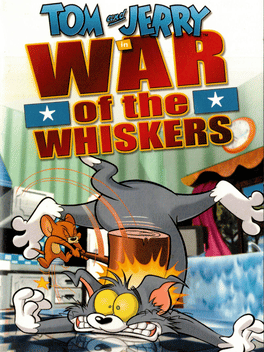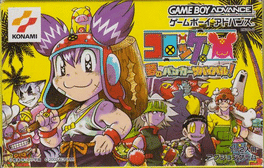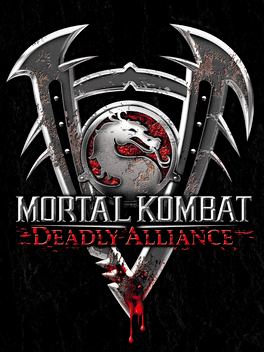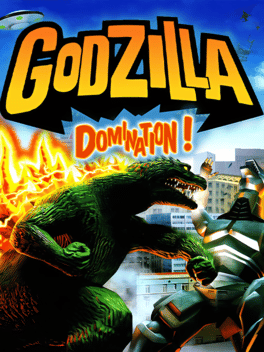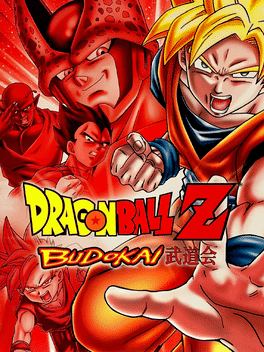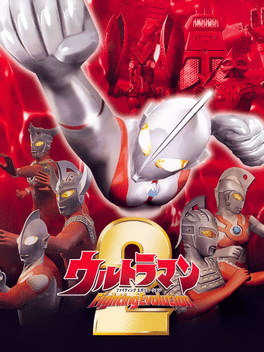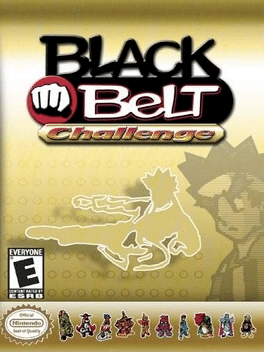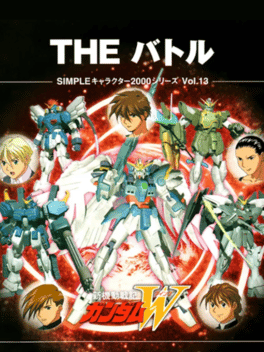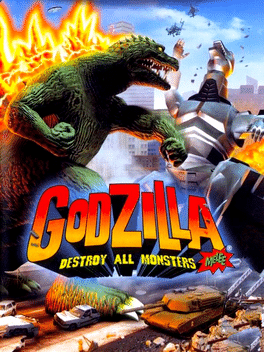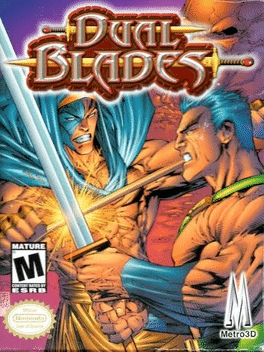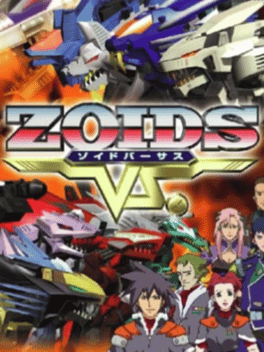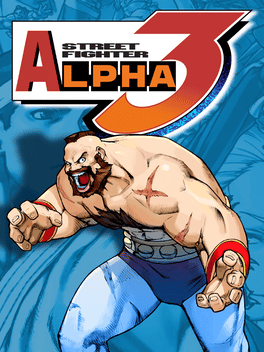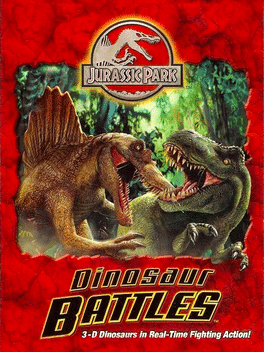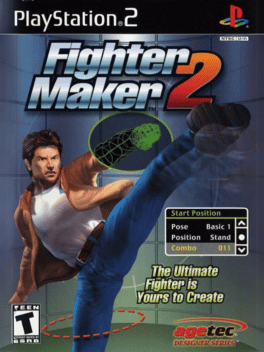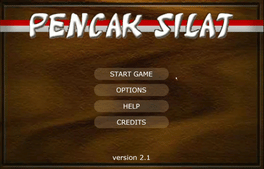New Nintendo 64 Games - Page 69
-
Tom and Jerry in War of the Whiskers
2002
star 6Are you ready to kick some butt with Tom and Jerry and friends? With your choice over 75 weapons, you can duke it out in unique levels such as Frankenmouse, a twisted laboratory, or Towering Infurno, an unstable construction site! Be Prepared for the ultimate game of "Cat and Mouse"! -
Croket! Yume no Banker Survival!
2002
The first game based on a manga series about a young boy who is trying to collect enough magical coins to resurrect his father. -
Mortal Kombat: Deadly Alliance
2002
star 6.5Mortal Kombat: Deadly Alliance is the first Mortal Kombat outing on the next-gen systems. New to DA is a completely revamped fight engine. The graphics are in full 3D and feature somewhat interactive environments. Each character now has different fighting stances, allowing them to be in an offensive stance or a fatality stance. Returning from past games are all your favorite fighters, and a host of new ones. Johnny Cage, Scorpion, Sub-Zero, Raiden, joined by such newcomers as Molloch and Quan Chi. Each character has their own specific fatalities. -
Godzilla: Domination!
2002
Six monsters battle through seven destructive locations in an attempt to prove themselves as the greatest monster to walk the Earth. Each monster has a personal set of punches, kicks and special moves to Dominate over the competition. Game features include 7 monsters each with their own home arena and special moves, power-ups and weapons revealed by destroyings buildings, five different modes including link mode to play against four friends, and customized fights for unlimited styles of gameplay. -
Kakuto Chojin: Back Alley Brutal
2002
Enter the Fist of Fire martial arts tournament and prove you are the greatest fighter on Earth in this Xbox-exclusive fighting game by Dream Factory. It was released in Japan under the name "Kakuto Chojin: Fighting Super Heroes". -
Dragon Ball Z: Budokai
2002
star 7.5Join us on a wild ride through the best action cartoon series on TV, Dragonball Z. The story begins after Goku defeats Piccolo at the World Marital Arts Tournament and he comes to visit Master Roshi, when all of a sudden, his brother Raditz appears and kidnaps his son, Gohan, after he saves him he is sent to Other World to train with King Kai for for two more powerful Saiyan arriving one year later. This wild ride story takes you from the Saiyan to the Cell Games Saga. There are also several options in the game: there is a world tournament mode where you could buy new moves and a practice mode where you can sharpen your skills before entering story mode. You could also summon Shenron when you collect all 7 Dragonballs. So, buckle up, hold on to your seat and enjoy the ride of Dragonball Z! -
Ultraman Fighting Evolution 2
2002
Ultraman Fighting Evolution 2 (ウルトラマン Fightingファイティング Evolutionエボリューション 2ツー Urutoraman Faitingu Eboryūshon Tsū) is a fighting game. It was released and published by Banpresto. It was the sequel of the original Ultraman Fighting Evolution series. -
Black Belt Challenge
2002
Black Belt Challenge
2002
The lost pages of the Book of Zero must be found, and you're just the brave warrior to take the job. Unfortunately, finding the pages will mean facing a number of deadly enemies, and you've got nothing but your bare hands and a black belt--to fight with. A truly amazing handheld fighting game, BLACK BELT CHALLENGE blends a powerful story with state-of-the art fighting to create a masterful combative experience like no other. Your choice of character will determine your motive for completing the Book of Zero, and each fighter will bring a different skill set to the arena. The game offers up a variety of modes to ensure high replay value and a huge fun factor. Packed with killer combos, incredible character animations, intuitive controls, and a series of great story lines, BLACK BELT CHALLENGE is sure to spawn a few sequels and imitations. Play against the computer or fight a friend. -
X-Men: Next Dimension
2002
star 4.4X-Men: Next Dimension is a fighting game and the third game in the X-Men: Mutant Academy game series. Next Dimension expands upon the concept of the first two games by adding several new characters, 3-D maps, and a story mode, which allows the player to fight a series of battles in between short movies that move the plot along. The plot of the story mode is loosely based on the comic story "Operation: Zero Tolerance". -
Simple Characters 2000 Series Vol. 13: Kidou Senki Gundam W - The Battle
2002
Kidou Senki Gundam W - The Battle is a 2d fighting game that features characters from the W Gundam series. -
Simple Characters 2000 Series Vol. 12: Kidou Butou-den G Gundam - The Battle
2002
Kidou Butou-den G Gundam is a 2d fighting game that features characters from the G Gundam series and these game modes: - Street - VS CPU - VS 2 Player -
The King of Fighters 2002
2002
Neo Geo AES Arcade Xbox Web browser PlayStation 3 Linux PC (Microsoft Windows) Mac Dreamcast PlayStation 2star 6.6The game brings back the team play composed by three characters each that was a tradition in previous games. The game has also several important changes in the gameplay, like the "Free Cancel System" or "Max Mode System", the "Quick Emergency Evasion" and "Quick MAX Mode Activation", aside from the countless changes in each character's special moves and their properties. -
Godzilla: Destroy All Monsters Melee
2002
star 6.8Godzilla: Destroy All Monsters Melee is a fighting game developed and published by Pipeworks Software, Inc. for the Nintendo GameCube in 2002. The game was later released for Game Boy Advance as Godzilla: Domination!. A version for the Xbox with additional content was released in 2003. A PlayStation 2 version was planned, but later cancelled. -
Dual Blades
2002
Dual Blades
2002
It is 150 B.C. amidst the Hun Empire. You must possess the power to slay your enemies and execute insane combos. The fearsome Alperen has harnessed incredible energy by merging his soul and the immortal sword to create the legendary weapon of Dual Blades. Survive battle after battle and face the ultimate test to topple Alperen, gain the sword and become immortal! -
Zoids VS
2002
Zoids VS
2002
star 2.2The first incarnation of the Zoid Vs series, released in Japan in 2002. The game was noted for its ragdoll-like movement when Zoids were hit back or killed. In this game, the Battle Mode is limited to only one set, meaning that no matter what character the player chooses, the battles are all the same. That said, the Battle Mode features characters and Zoids from Chaotic Century, New Century, and the Zoids VS story lines. -
Rave Master: Special Attack Force!
2002
It's time for the Rave-olution! Battle it out as Haru Glory, Elie, Musica, and many other characters from the exciting new animated series. Wield powerful weapons and harness the skill of the Tension Gauge as you unleash explosive attack combos and incredible special moves to defeat your enemies. -
Street Fighter Alpha 3 Upper
2002
Street Fighter Alpha 3 Upper is a compressed version of the original game and lacks several stages and music tracks from the previous arcade and console versions, although all the characters are present. In addition, Eagle, Maki, and Yun, all of whom were characters from Capcom vs. SNK 2 were added to the game. Only a few character voices were included in this version due to storage limitations, which the developers worked around by having characters share voice samples, modified with real-time pitch shifting, such as using a higher pitched version of Ken's voice for Sakura's attack calls. -
Jurassic Park: Dinosaur Battles
2002
Jurassic Park: Dinosaur Battles is a 3D fighting game in which you play Harrison Manly, a scientist who takes control of dinosaurs using a device called the Dinovoc. -
Fighter Maker 2
2002
Fighter Maker 2
2002
Fighter Maker 2 (FM2) for the PS2 was another entry in the Designer Series from Agetec Inc. It was released in November 2002. It is similar to the original, but with more advancements in character design, movement, and attacks. As with the first, the game was met with lukewarm reviews, mainly due to its cumbersome interface and the lack of bells and whistles that were featured in most fighting games at the time. -
Pencak Silat 2.1
2002
Pencak Silat 2.1
2002
Pencak Silat is the original martial art style of Indonesian. At the dawn of 20th century, chaos and dispute reign across the Archipelago. A person with principle to unite calls for a new adventure in this tropical land.
